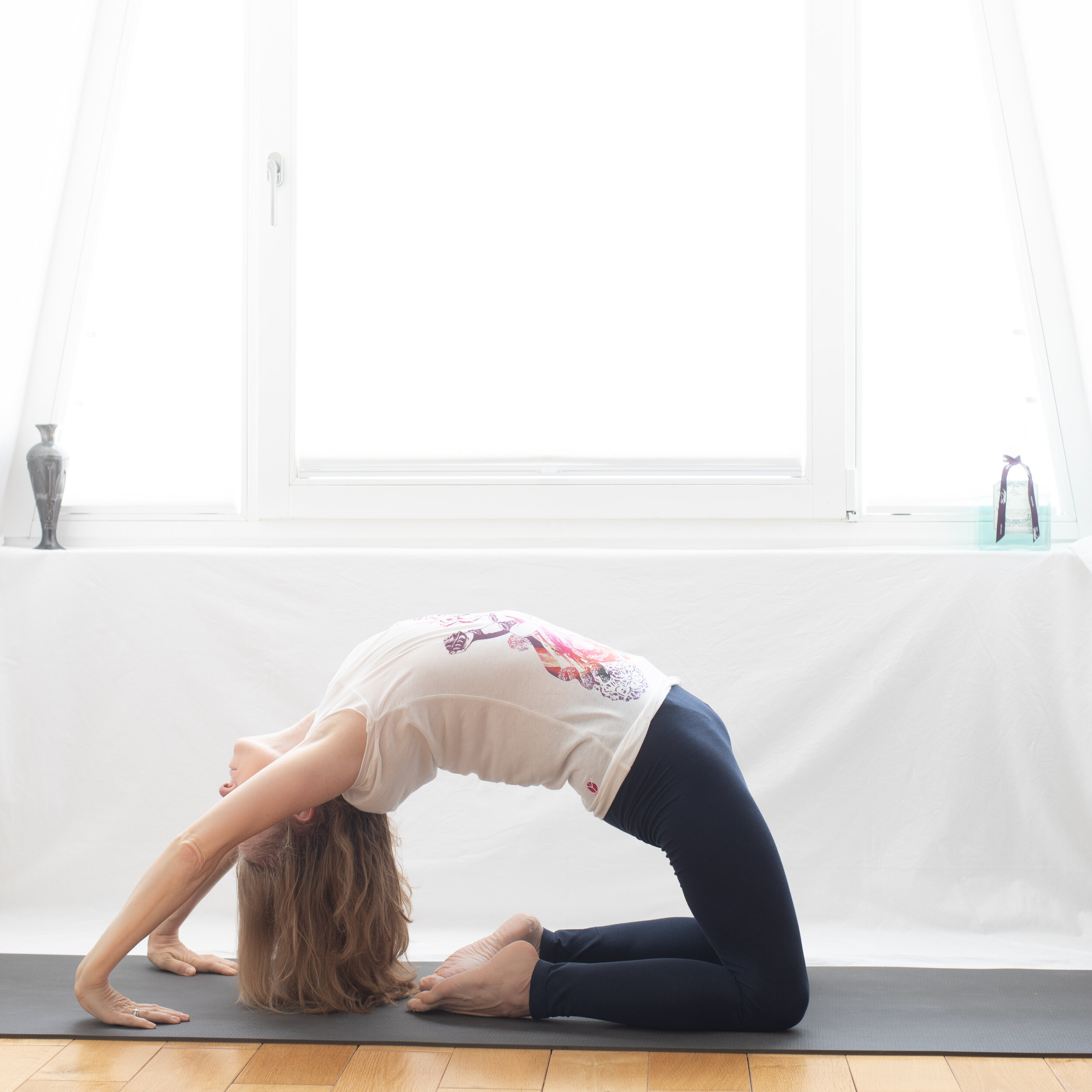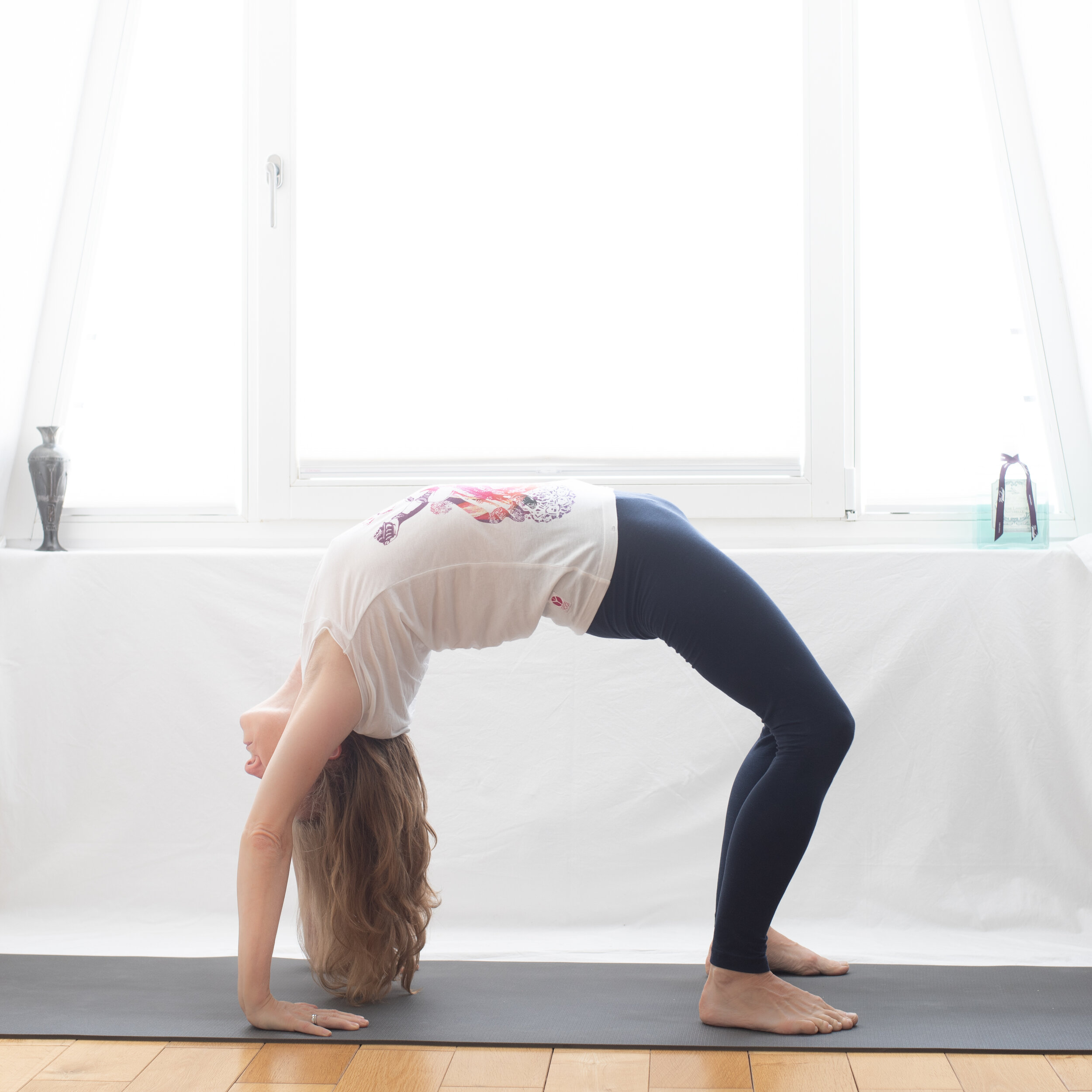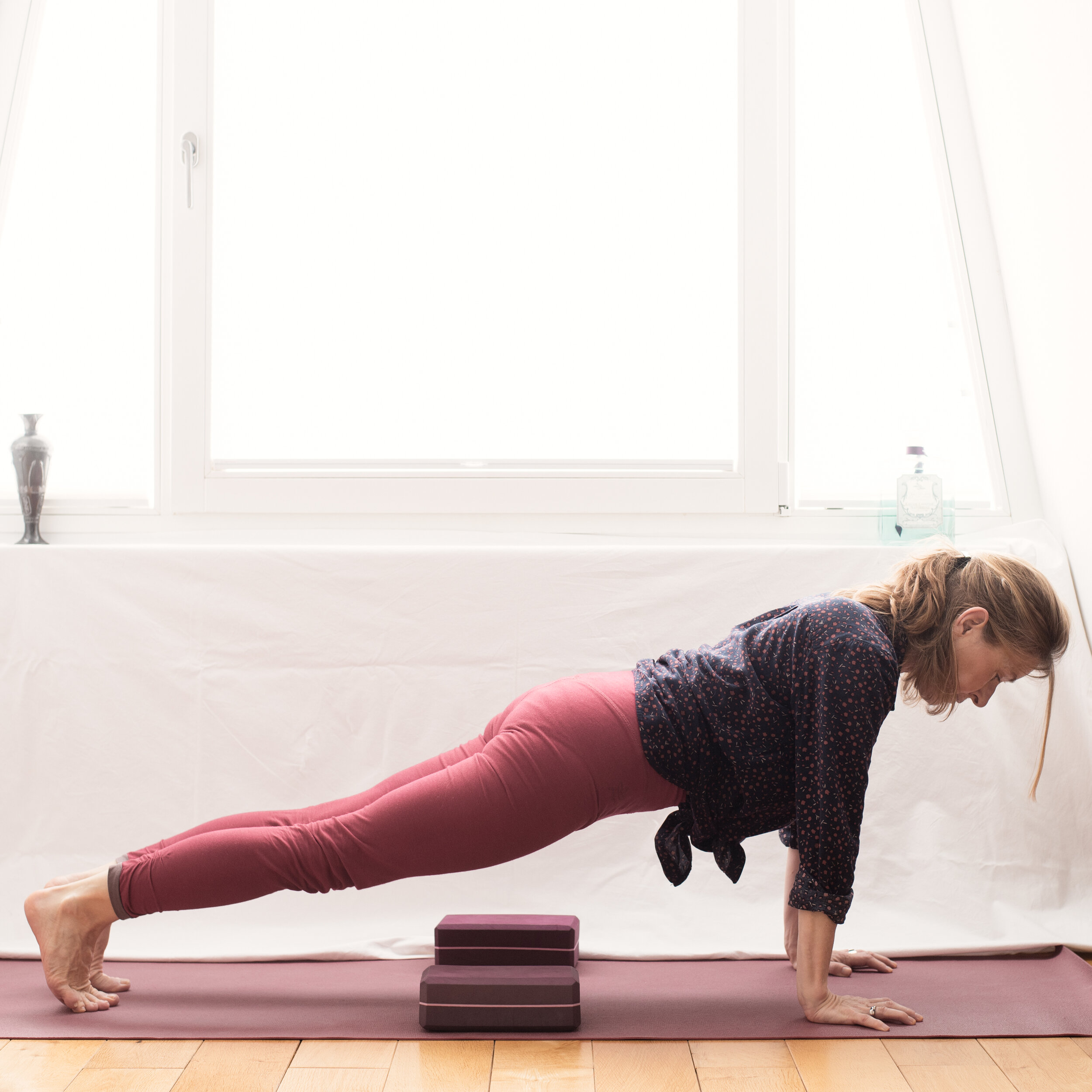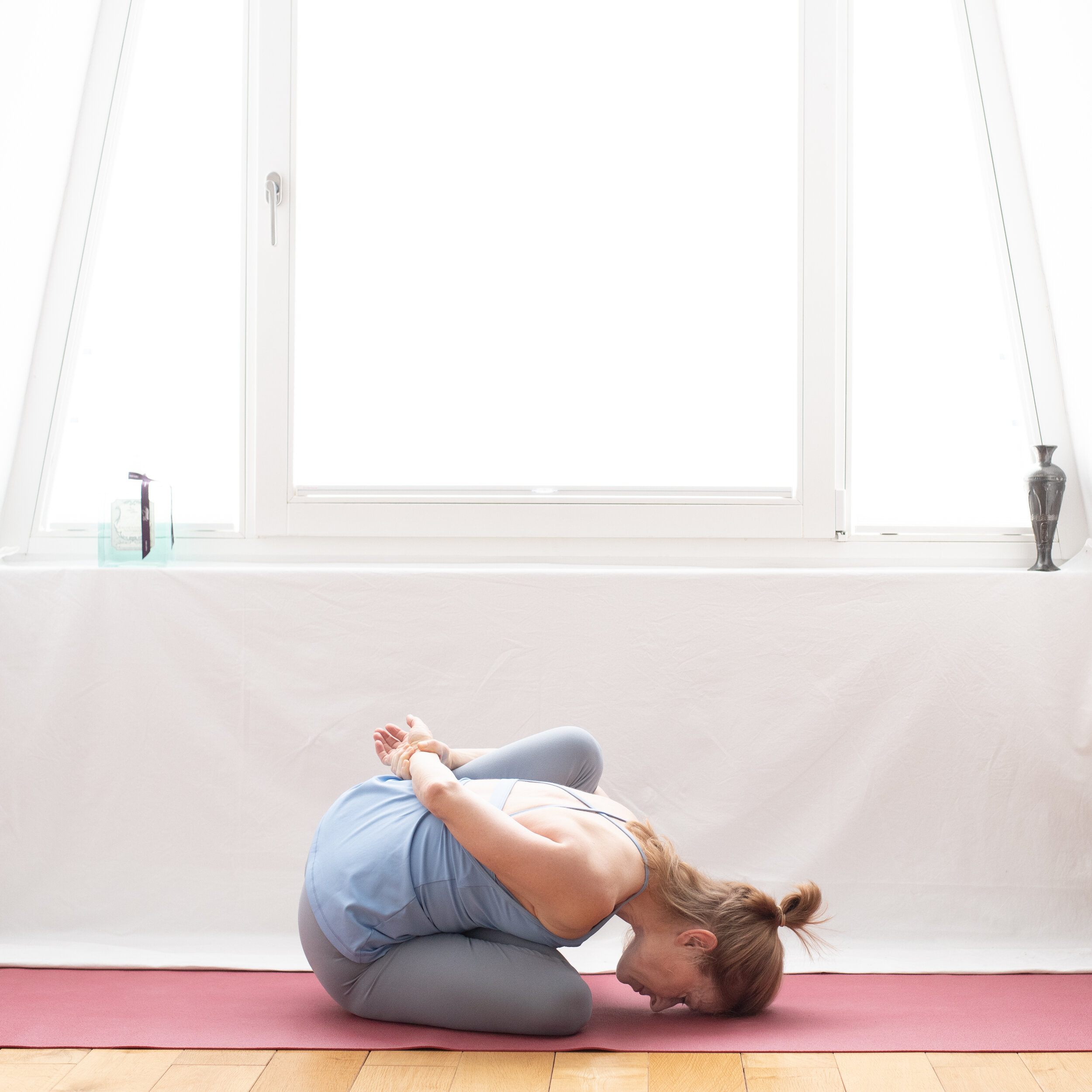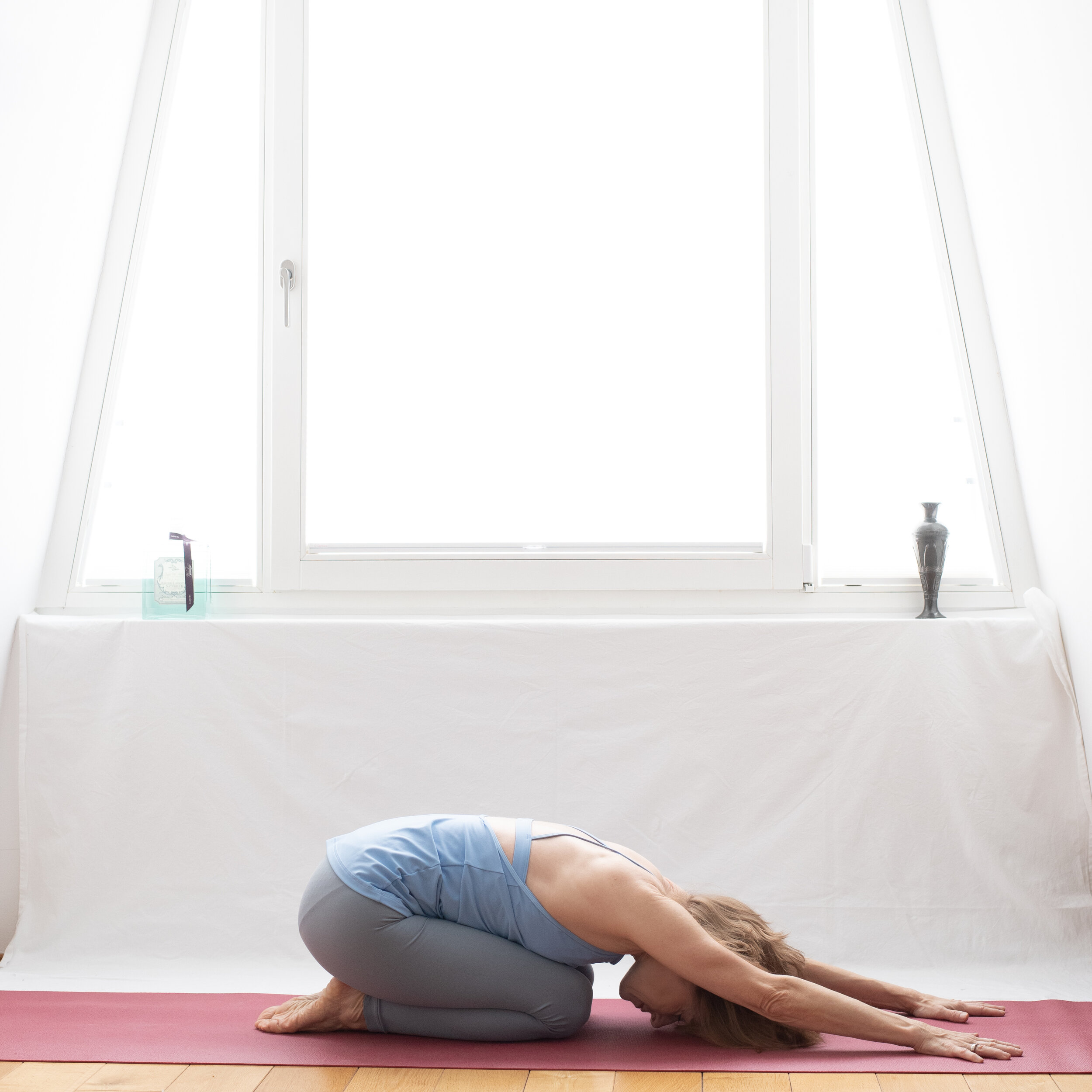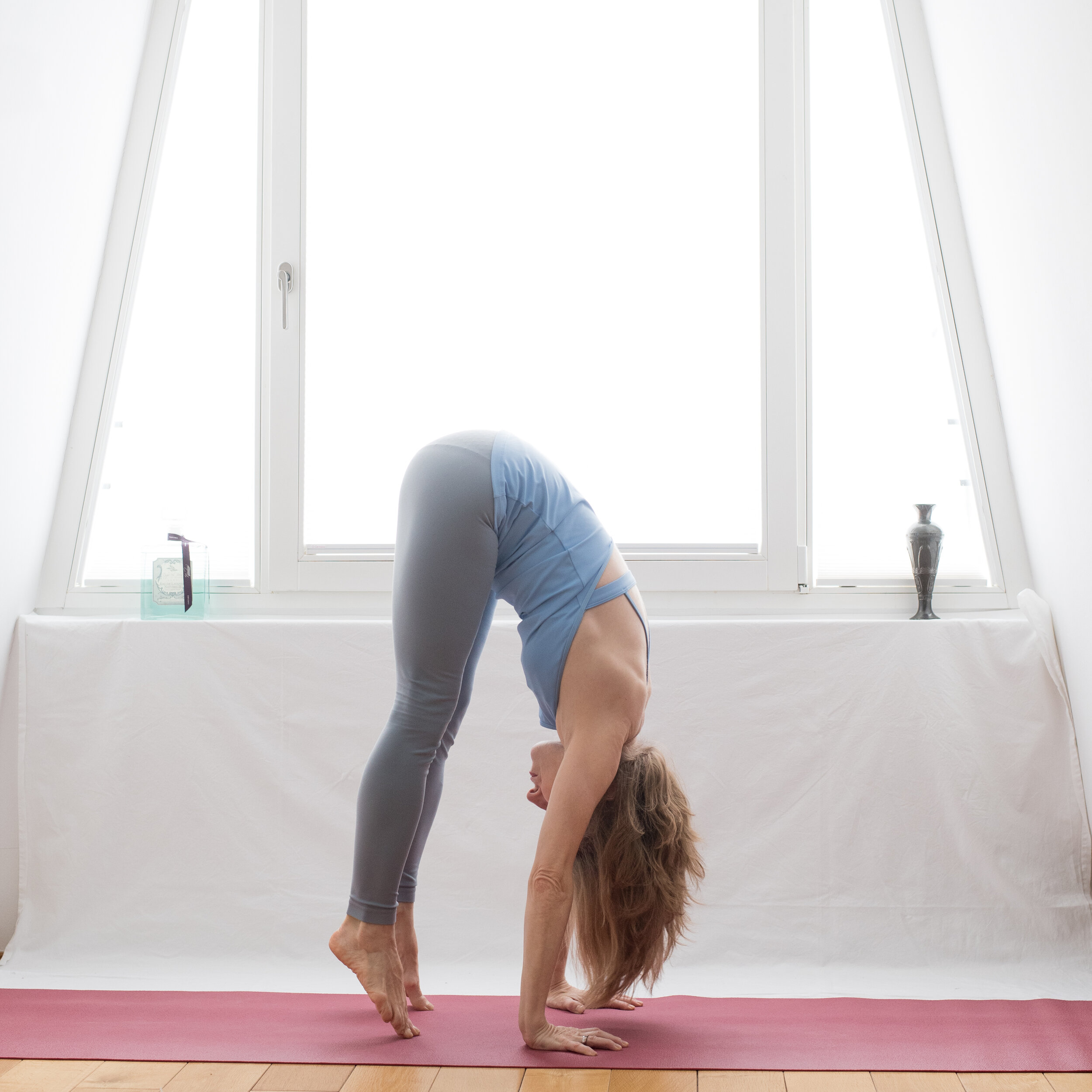Kapotasana, June 2021
I do so many additional exercises that I forget sometimes the pose for which I’m doing all the stretching. Every back bending asana is a bit different. They have also much in common. They stretch the hip flexor. The shoulders get stretched. The entire body shall lengthened. This can be done with the breath and the muscles. It’s important to create room. The bow shall not be compressed, but wide and relaxed.
It’s better to bow backwards correctly than to force the body to reach the feet with the hands. Good to know the goal, but during the practice I aim for a correct movement. This helps to prevent injuries as well.
To get out of an asana is another challenge. Strong legs are required, strong bandhas, too.
Stretching can be done more than once a day. It’s even supportive to add additional training. Not always I’ve the energy to add another yoga or stretching session, but sometimes. It can make a difference.
To practice once a day is absolutely perfect.
This morning I woke up at 5 am. I also got up and enjoyed the early morning hour. Early I was on my mat. I remembered the two years in my life when I started my practice every day at 6 am. This felt wonderful. I want to get back to an early practice. This would give me a lot of time for other necessary activities. This would mean less stress.
We all have to manage our time. It seems to slip through the fingers. If one wants to achieve anything it’s good advice to monitor where the time goes. There are many distractions these days.
I was so joyful that I was so early on the mat. I hit a wall today. I felt stiff, weak. I tried to find out my boundaries for today. I breathed deeply. It’s nonsense to project the past into the future. Yesterday was good, today I practiced slowly and modest. I’m curious how I’ll feel tomorrow.
Keep practicing. This is what counts more than the performance.
